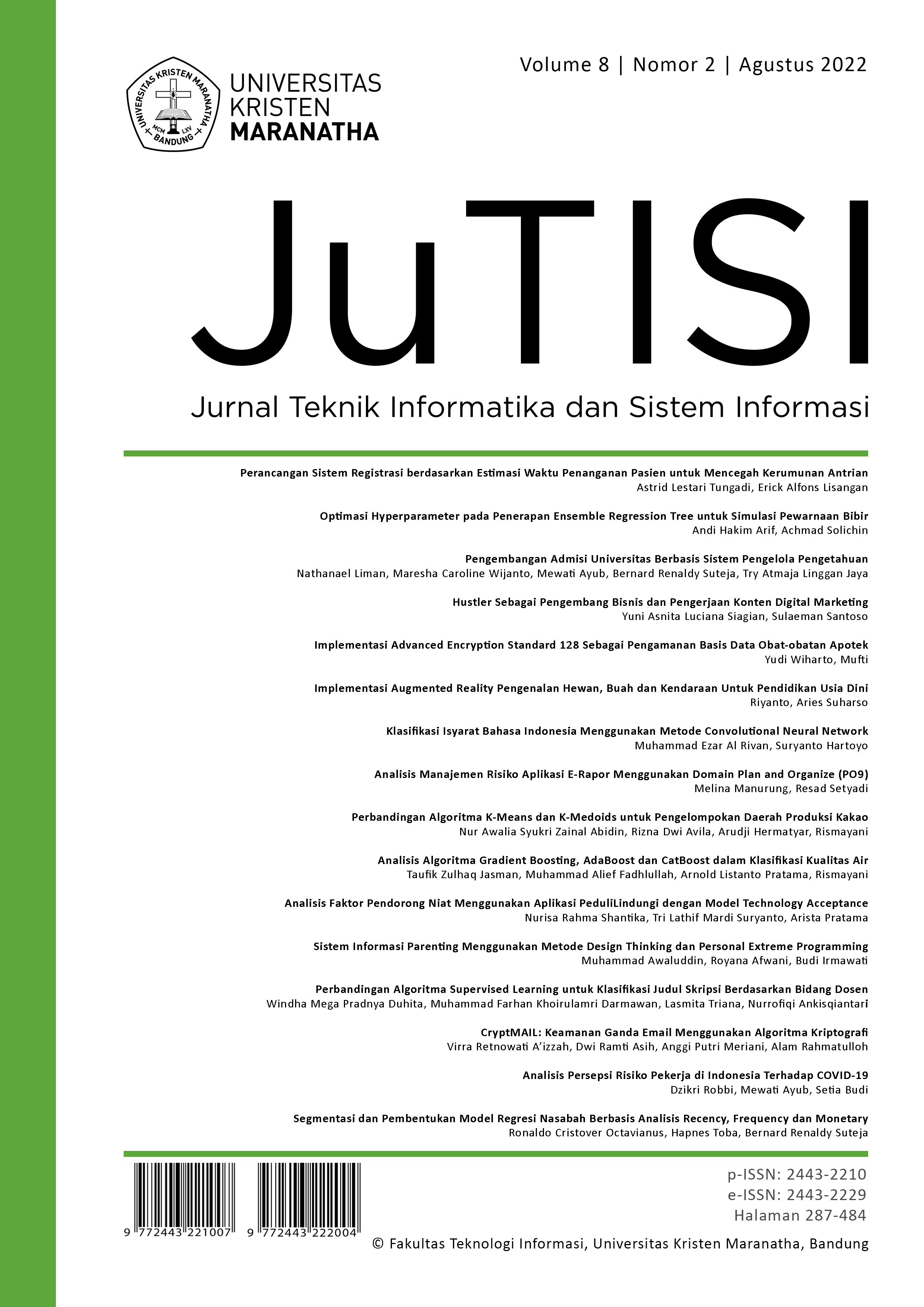Segmentation and Formation of Customer Regression Model Based on Recency, Frequency and Monetary Analysis
Main Article Content
Abstract
During this pandemic, the number of customers of a securities company has increased quite high. This requires securities companies to conduct analysis related to security customer data against transaction data so that the company can find out the segmentation of registered customers and also so that companies can predict the transaction patterns of customers in the company. In processing transaction data, the RFM (Recency, Frequency, Monetary) model can be used as a way to group customers according to their business values. After doing the modeling using RFM, the data is clustered using the K-Means algorithm to find out the segmentation in the RFM model in each group. The RFM model that has been clustered will produce segments based on the RFM group. In this data, a linear regression analysis process is carried out where each group and segment is analyzed and predicted related to variables such as recency, monetary and frequency. The results of data grouping, customer segmentation and also predictions with linear regression can be one of the company's references to make a business decision. From the linear regression process carried out on the RFM attributes, a prediction of the monetary value of the existing recency value is generated and the monetary value of the frequency can also be known with a fairly good error rate.
Downloads
Download data is not yet available.
Article Details
How to Cite
[1]
R. Cristover, H. Toba, and B. R. Suteja, “Segmentation and Formation of Customer Regression Model Based on Recency, Frequency and Monetary Analysis”, JuTISI, vol. 8, no. 2, pp. 474 –, Aug. 2022.
Section
Articles

This work is licensed under a Creative Commons Attribution-NonCommercial 4.0 International License.
This is an open-access article distributed under the terms of the Creative Commons Attribution-NonCommercial 4.0 International License (https://creativecommons.org/licenses/by-nc/4.0/) which permits unrestricted non-commercial used, distribution and reproduction in any medium.
This work is licensed under a Creative Commons Attribution-NonCommercial 4.0 International License.

